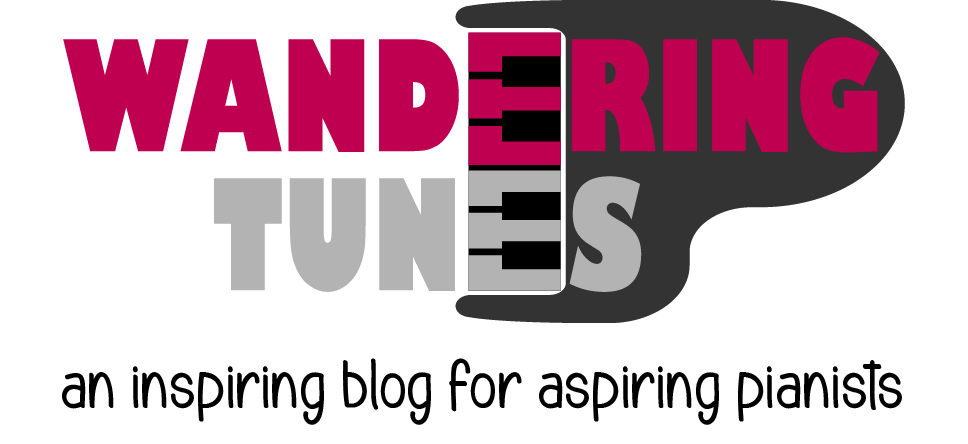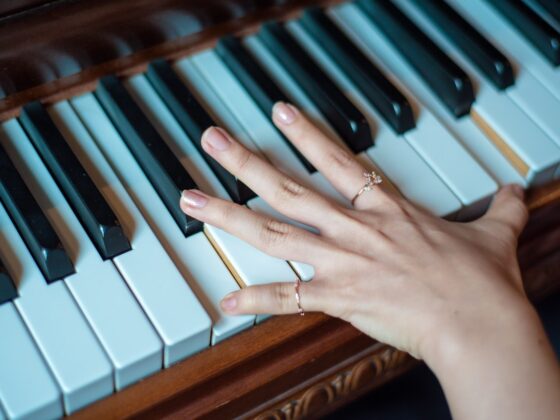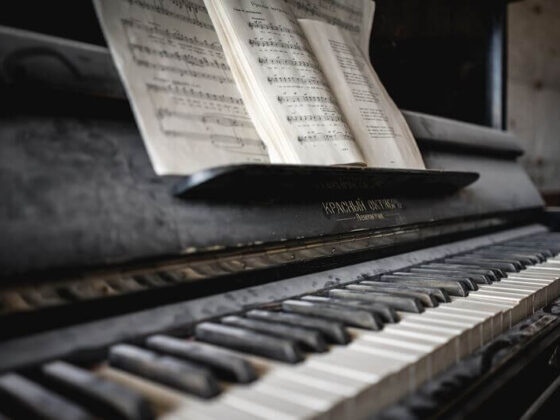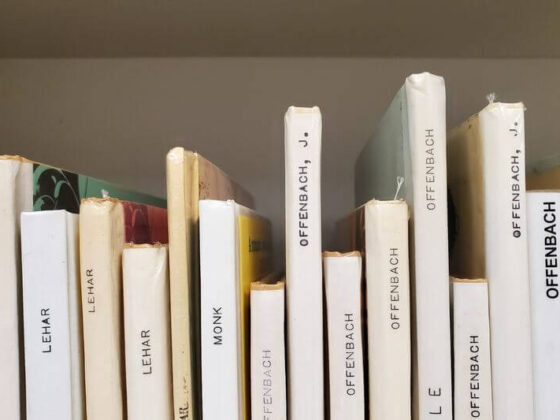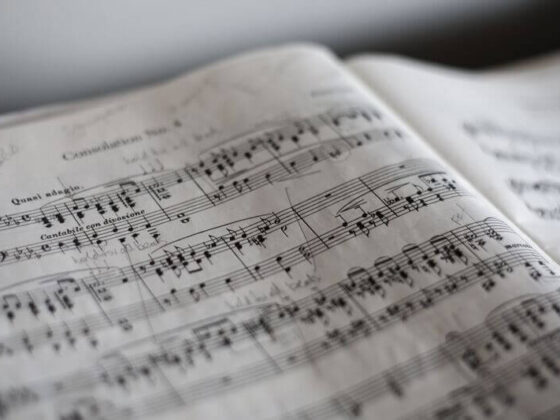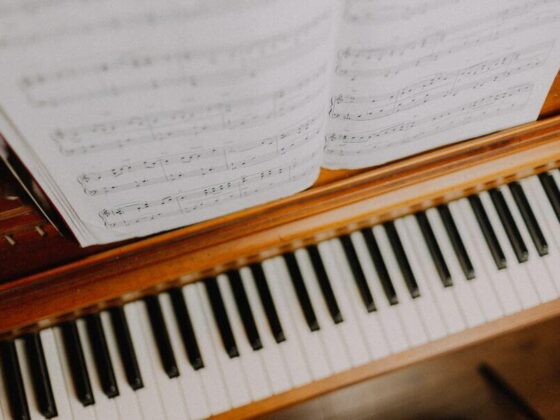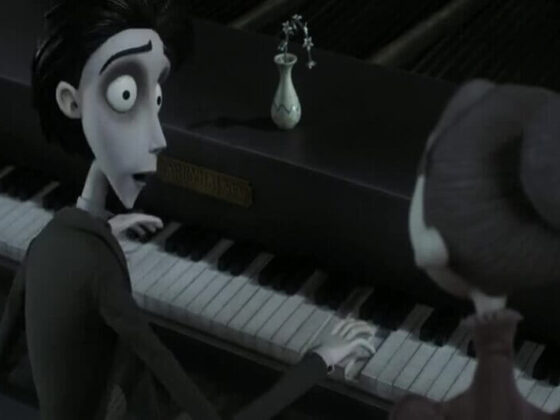Want to learn how to read piano notes faster?
Reading music is very much like reading in a different language. Music has also its own alphabet and signs, and it can take some time to master it before gaining fluency.
In fact, piano music is even more complex than other languages. You need to identify the two different clefs, find the corresponding keys, and play at the same time, which is not an easy thing to do as a beginner.
However, there are certain methods that can improve your sight reading skills and help you read the piano notes faster.
But first, let’s take a quick look at the benefits of fast sight-reading skills.
Looking for a fun & easy way to learn the piano?
Skoove offers interactive piano lessons that work with all pianos and keyboards!
Try it now with a 7-day free trial
Why Should You Learn How to Read Piano Sheet Music Fast?
- It speeds up the learning of a piece, which helps you learn more songs in a less amount of time and build your repertoire much quicker
- Becoming a fast sight reader can help you become an accompanist. It’s a significant skill if you want to play in choirs and bands.
Related: How To Make Money Playing Piano: 8 Proven Ways
- Reading notes fast increases your accuracy. You are less likely to miss a note if you can read the sheet music quickly.
- It allows you to easily communicate with other musicians.
Now that you know reading sheet music faster is a fundamental skill that is worth improving, let’s see how you can get better at it.
How to Read Piano Notes Faster?
Master the Basic Music Theory
Without knowing the basics of music theory, you can’t expect to be a fast reader.
When you don’t have the very fundamental knowledge of notes, key signatures, musical sings, and clefs, it’s going to take a long time to identify what’s written on the sheet music and press the corresponding keys on the piano.
Can you immediately recognize the notes on the staff and know which key you should be pressing?
If not, you should start by mastering this skill, because it’s the most essential one.
You can use a free site like musictheory.net to practice it. It has a bunch of exercises that teach you everything you need to know about the basics of music theory.
My favorite exercises for improving piano sight-reading are under the Keyboard Identification section.
For example, in the Keyboard Reverse Identification exercise, you are required to press the correct note on the virtual keyboard that is shown in the staff.
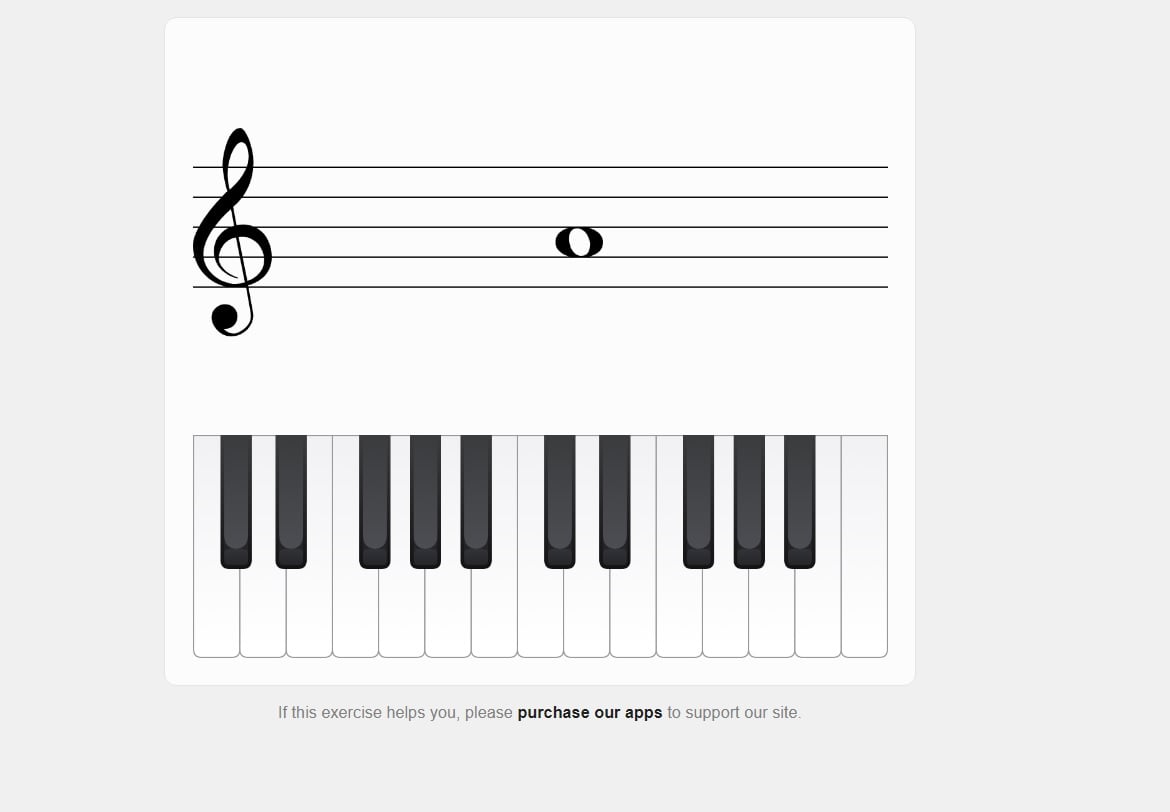 I think it’s a really helpful exercise and practicing it every day for 5-10 mins is well worth your time.
I think it’s a really helpful exercise and practicing it every day for 5-10 mins is well worth your time.
Another alternative might be practicing with music notes flashcards like this one. It’s similar to the exercise above, though you get the chance to press notes on a real piano/keyboard. All you need to do is to randomly select a card, and try to immediately press the indicated note on the key. Try to press the key as fast as you can.
It’s a better and more fun way to get faster at reading music, which I highly recommend.
Find the Key of The Song
Knowing the key signature in which you are playing is crucial if you want to read the notes faster.
A common reason for sight-reading slowly is because you are pressing wrong notes.
By finding the key signature of the song you are playing, you immediately know what sharps or flats there are, which both increases accuracy and speed.
Related: How to Play Piano Without Mistakes: 9 Essential Steps
Let’s say a song is in the key of G major. If you know that G major contains one accidental, that is, F sharp, your brain can automatically code all the F notes on the sheet music as F sharp.
If you are new to piano playing, you might be struggling with identifying the key signatures or memorizing all the accidentals in different keys. In this case, you can get a marker and highlight the parts on the sheet music where you need to be careful about before actually starting learning the music.
By doing so, you will be less likely to make mistakes due to key signatures, which will greatly speed up your reading.
If you don’t know anything about key signatures, you can check out this quick video tutorial.
Don’t Look at Your Hands
Looking at hands while playing might be another factor that is slowing you down, because it may cause you to miss a note, make a mistake and lose the balance of your playing.
While reading notes, you should keep your eyes mostly on sheet music, and look at your hands only if there is a part where you need to perform a large leap, change octave, or switch to a different pattern from the previous parts of the piece.
If you find yourself constantly looking at your hands, then try to minimize it. By looking mostly at sheet music, you give your hands a better chance of learning the geography of the piano keys.
Eventually, your hands will know how they should position themselves based on what you are reading on sheet music. They need to learn it by getting used to it, that’s why you should start implementing this technique even if you are a beginner.
Practice Sight-Reading with Easy Songs
One of the best ways to learn how to read piano sheet music fast is by constantly exposing yourself to new music, and it’s a better idea to practice sight-reading with songs that are below your level.
The songs you are practicing should be easily playable, and shouldn’t be too complex in terms of rhythm, technical difficulty, and key signatures.
It’s a good idea to allocate 15-30 mins of your practice time for this exercise.
I always try to practice sight-reading for at least 15 mins in my piano practice session. Because my level is upper-intermediate, I try to find music that is either easy or early-intermediate for my sight-reading exercise.
I always use Virtual Sheet Music for finding sight-reading songs because they have a really comprehensive library of sheet music of any level and genre. For the sight-reading exercise, you don’t need to limit yourself to only one genre like classical. It’s really important that you sight-read the songs that you enjoy so that you can stay motivated to keep practicing.
You can also consider subscribing to a sheet music service like I did to get unlimited access to sheet music libraries, which can help you find any song with a high-quality arrangement and other bonuses.
If you are interested, this post may help you choose which service you should subscribe to:
Alternatively, you can check out the free options:
Identify Patterns
Most songs will have the main theme and specific patterns that repeat throughout the song.

Listen to the piece you want to learn, or just have a look at the sheet music.
Did you notice any repeating notes and patterns?
Most music will have those repeating themes. What you need to do is to identify them, and try to look at those patterns more holistically.
Rather than reading note by note, you can now see those multiple notes as one whole shape. Now, every time that pattern repeats, you don’t need to read those notes one by one. By getting to know the patterns in a song, you can easily predict which notes you should be playing when you encounter one of those repeating themes, which significantly increases the speed of reading sheet music.
Use Correct Fingering
Using the wrong fingers while playing is another reason for slow reading.
Not knowing which fingers you should be using for a given note-pattern might cause you to give your attention to figuring out your fingering, which negatively affects the sight-reading speed.
As I mentioned before, you should be mostly looking at sheet music instead of your hands. When you don’t use proper fingering, it will make you look at your hands as well as causing you to make mistakes.
Correct fingering is fundamental for both accuracy and fast sight-reading, so it is crucial that you know how to position your fingers at different note patterns and measures.
If you struggle with proper fingering on the piano, you can check out this short and easy tutorial by Pianote:
Practice Sight Reading Every Day
Last but not least, reading piano notes faster is not a skill that is obtained overnight, and it requires consistent practice.
While the methods that I mentioned above will definitely help you become a faster sight-reader, they won’t have a significant effect without everyday practice.
However, don’t put too much pressure on yourself if you don’t have the opportunity to practice every day.
What is important is to do it consistently until your brain is able to automatically play a measure written on the sheet music without thinking which notes you should press every time, and you can only achieve this level over time with consistent practice and exposure to new music.
Special Practice Tip
I want to talk about the method that I used for years, which greatly helped me with increasing my speed of reading notes, and I think you may want to try it too.
I participated in a lot of ABRSM piano performance exams. If you are familiar with the ABRSM system, you may know that they have sight-reading tests for piano performance exams at all levels.
Having participated in those exams until Grade 7 and passed all of those sight-reading exams with distinction, I have learned quite a bit along the way as to how you can get faster at reading piano notes.
The method I used to prepare for the sight-reading tests was by following the ABRSM sight-reading course materials, which you can find here on Amazon.
You should choose a book based on your level. After you have the book, you will see a lot of little excerpts of music inside, which will look like this.
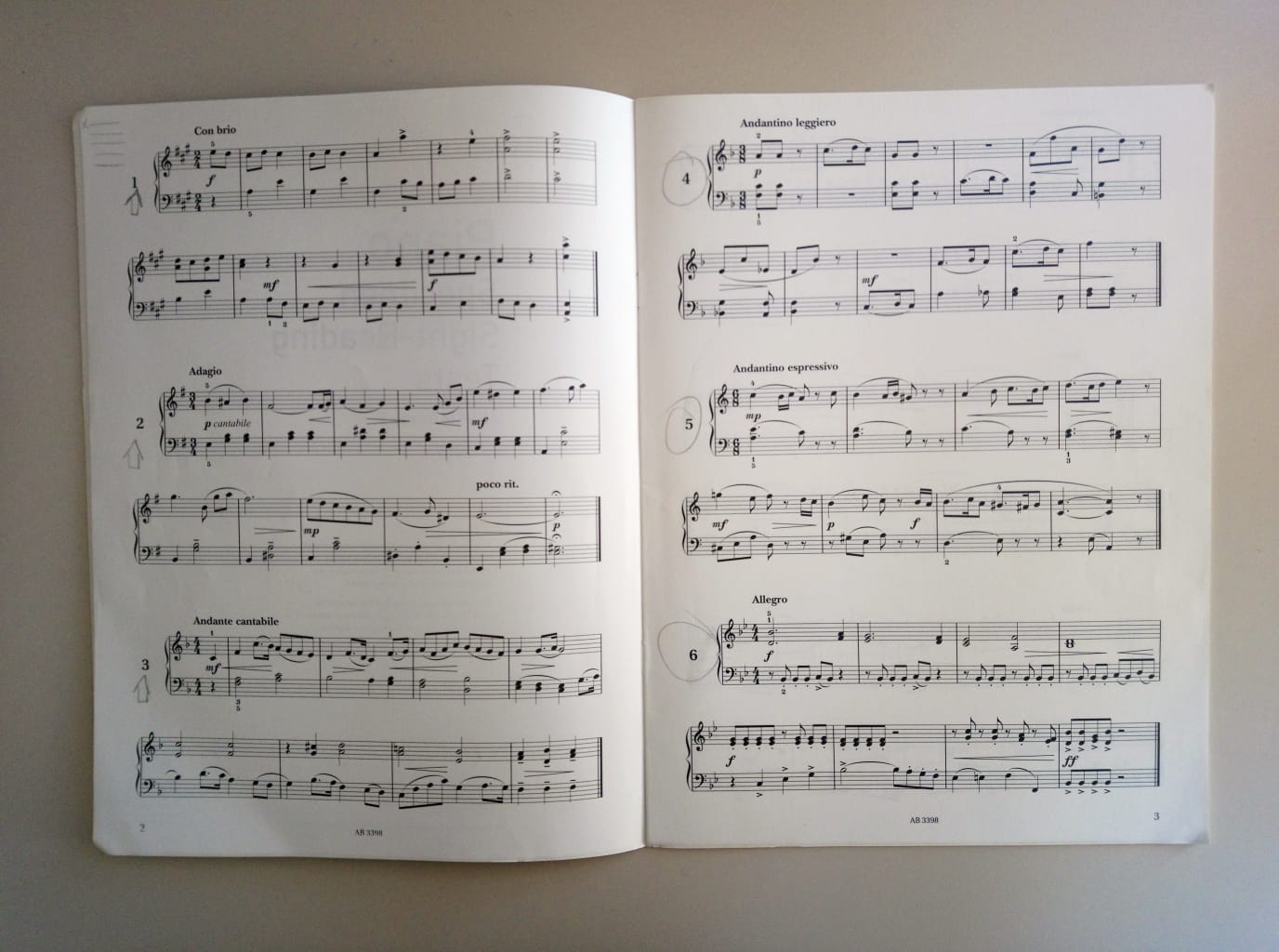
Once you choose an excerpt, you should set a timer for 30 secs to look through and try playing any part you wish. When the 30 secs are over though, you have to play the entire excerpt without stopping in one take.
Doing these exercises in the ABRSM books has been really helpful for me to learn to read notes fast, and I hope you like this method as well.
Conclusion
Overall, sight-reading faster is not a skill you can acquire overnight. However, these methods will help you gain this ability much quicker.
These were my top tips to learn how to read piano notes faster.
Which method do you think is the most beneficial? Which method are you going to try?
Let me know in the comments!
